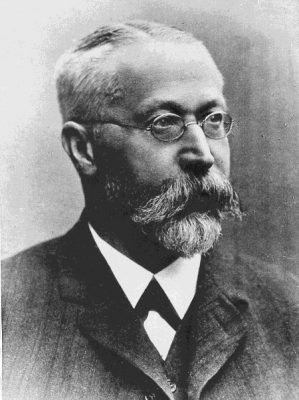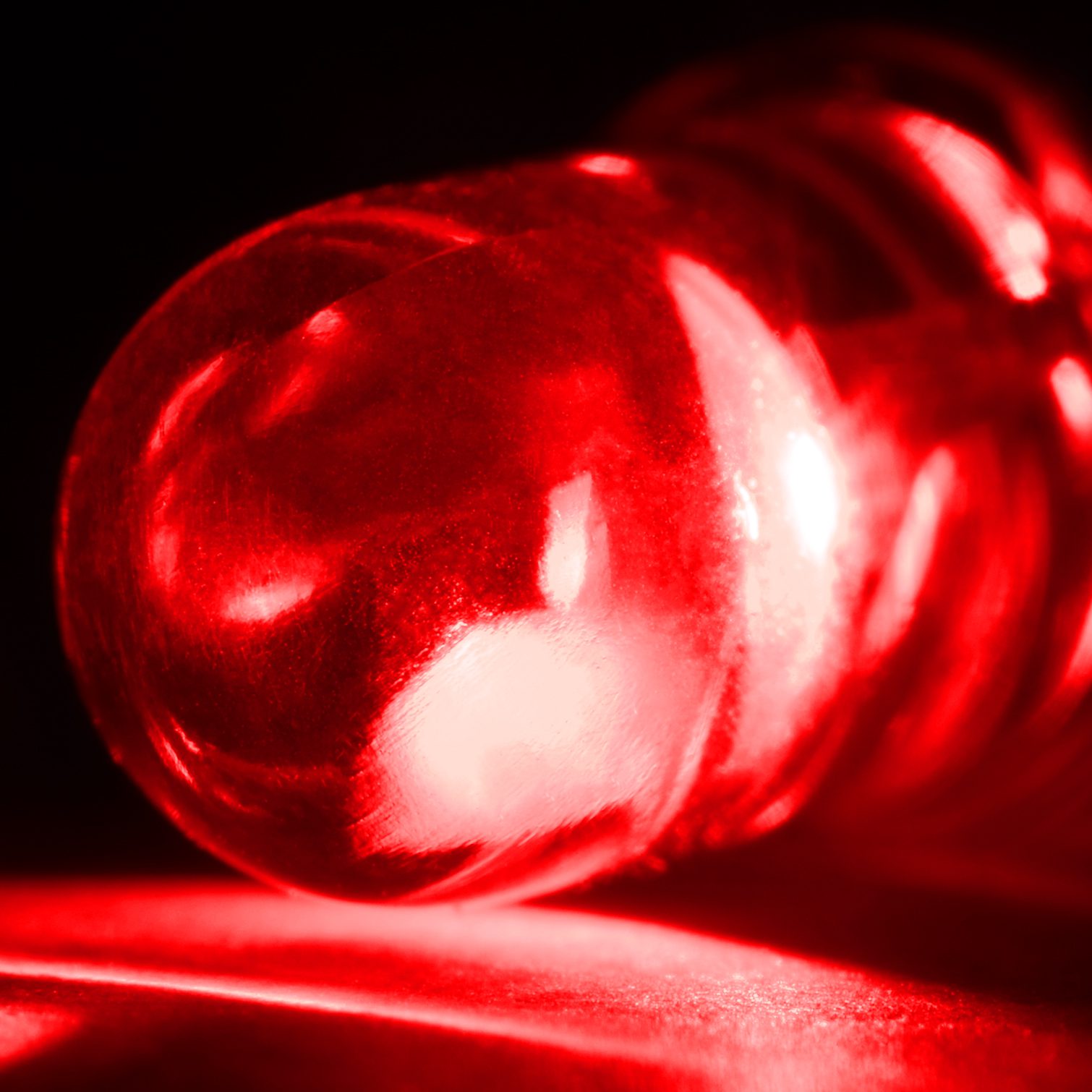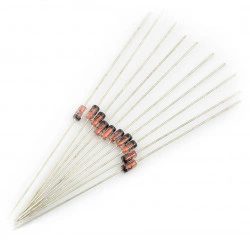Table of Contents:
How do you classify the diodes? Here’s the question. It’s not that the scientific world is arguing – the division is pretty clear. Electrical engineers, physicists, and all kinds of practitioners can do it, but we’ve managed it our way differently: sometimes it’s just better to go back to the roots to understand something from the ground up. Before we get to the divisions, we need to know first…
What is a diode and how was it created?
A diode is an electronic component that conducts electricity primarily in one direction. This phenomenon is called asymmetric conduction. It has a low, and ideally zero, resistance in one direction and a high, and ideally infinite, resistance in the other direction. A diode electron tube or thermionic diode is a vacuum tube with two electrodes, a heated cathode and a plate. Electrons in it can flow only in one direction – from the cathode to the plate. In contrast, a semiconductor diode, a common type of diode used today, is a crystalline piece of semiconductor material with a p-n junction connected to two electrical terminals.
But we wouldn’t be ourselves without an ounce of history either. The discovery of asymmetric electrical conductivity at the interface between a crystalline mineral and a metal was made by German physicist Ferdinand Braun in 1874, which led to the creation of semiconductor diodes. Today, most diodes are made of silicon, but other semiconducting materials such as gallium arsenide and germanium are also used. In 1897, thanks to Braun’s work, the first oscilloscope equipped with a cathode ray tube had already been created. He worked with Guglielmo Marconi, a pioneer of radio and the electronics industry, also a Nobel Prize winner in physics.
The diode was not immediately a diode. It was originally called a rectifier because of its ability to convert alternating current (AC) to direct current (DC).
It was renamed a diode in 1919 by English physicist William Henry Eccles, who coined the term from the Greek stem di, meaning “two,” and ode, a shortened form of “electrodes,” a word coined by Michael Faraday – and thus the English word diode was born. Why is it important to know this? Because it helps you better associate how a diode works – electron comes from the Greek ἤλεκτρον, electron, which means amber and from which the word electricity comes, and hodos: path, way or connection. So – the path of electricity?

There are many diodes, as well as various ways of their division. At the beginning, you should always consider whether you are looking for a structural classification according to parameters, or rather a functional one according to applications. This common misclassification often leads to confusion and ultimately makes us no longer know what we are looking for. Thus, there are diodes such as Zener diode, Schottky diode (mistakenly: Schotky), LED, rectifier diode, notification diode, meaning “flashing” or not, laser diode, yellow, blue, red … by many mistakenly lined up for comparison, and it’s like comparing a a blue jeep with a purple bicycle.
Triode
The triode is a protozoan among diodes and it is hard not to mention it. Trio, because it has three electrodes – anode, cathode and grid. It was created in 1906 and found its way into generators and amplifiers, among other things. It also contributed to the invention of the diffusion pump for achieving vacuum and improving the performance of electron tubes. In 1911 triode was used as an amplifier, and in 1914 triode was used in telephone line amplifiers between New York and San Francisco. In Poland, the first was the Warsaw-based Radjopol – to the joy of futurists raging in the culture, it began small-scale production of triodes in 1921.

Semiconductor diode
Let’s go back to the then 24-year-old Ferdinand Braun. The young graduate of the University of Berlin was studying the properties of electrolytes and crystals that conduct electricity at the University of Würzburg. In 1874, while examining galena (lead sulfide) crystals with a thin metal wire, he noticed that the current flowed freely in one direction only. Braun thus discovered the electrical rectification effect that occurs at the interface between metals and certain crystalline materials. He demonstrated this semiconductor device in Leipzig in 1876, but it found no useful application until the advent of radio in the early 1900s.
Although semiconductor devices allowed simple radio receivers to operate without external power, the more predictable operation of vacuum tube diodes replaced them in most radio applications in the mid-1920s. Semiconductors regained popularity during World War II as radar detectors because of their ability to operate at microwave frequencies. Radar influenced the fate of World War II, but it would not have done so without the diode. Millions of crystal rectifier diodes, with a metal point in contact with a tiny piece of silicon or germanium inside, were manufactured for use in Allied radar receivers. At the end of the war, 99.9 percent pure silicon was available in the laboratories of the Dupont Chemical Company, and in 1947 work from Purdue, Indiana, and purified germanium produced the first blade transistor.
Light emitting diodes – LED
Sounds more familiar, right? Or less off-putting to those who have little to do with physics. The field of light-emitting diodes was particularly rich in pioneering work. In a 1907 letter to Electrical World, H. J. Round, an English radio pioneer working for Guglielmo Marconi in New York, described electroluminescence from a carborundum (silicon carbide) crystal. This is the first known report of light emission from a semiconductor, on which the modern LED lamp is based. In 1922-23, Russian engineer Oleg Losiev reported light emission from a radio crystal, and in 1927 he filed a patent for a “light relay” in which he proposed his devices “for rapid telegraph and telephone communication.” The Russians and Soviets had a fancy for names, there’s no denying it. The work actually foreshadowed the development of diodes, which was fundamental to modern fiber optic links.

Pioneer, commercial visible wavelength LEDs were widely used as replacements for incandescent and neon lights and in seven-segment displays, in expensive devices such as laboratory and test equipment for electronics, and then in devices somewhat closer to us such as calculators, televisions, radios, telephones, and watches. Until 1968, LEDs in the visible and infrared light range were extremely expensive, on the order of $200 apiece, and therefore had little practical use. Early red LEDs were only bright enough to be used at most as indicators because, generally speaking, the light output was not sufficient to illuminate a larger area. The readouts on calculators were so small (in size, not value) that plastic lenses were mounted over each digit to make them readable. Later, other colors became widely available and appeared in appliances and home appliances, until the breakthrough associated with the hard-to-reach blue LED in 1992 and awarded a Nobel Prize in 2014. At last!
LEDs have given rise to more specialized technologies like OLEDs and AMOLEDs, the performance of which is becoming more readily and widely used in consumer electronics.
Other types of diodes


There are many types of diodes, but it is useful to use a simple division when searching:
- by material (silicon or germanium),
- by design (e.g. blade and film, alloy and diffusion, Schottky),
- by application (e.g. rectifying, impulse, universal),
- by phenomena (e.g. Zener, Gunn, avalanche).
Why there are no separate links for them? Well, truth be told, we have over 300 types of diodes on offer, at least at the time this article is written, so you certainly won’t be missing anything. Where you’re looking for something precise – and it’s hard not to, electronic projects are finely tuned technical affairs after all – precise specification filtering will help you at the store.

How useful was this post?
Click on a star to rate it!
Average rating 5 / 5. Vote count: 1
No votes so far! Be the first to rate this post.




















